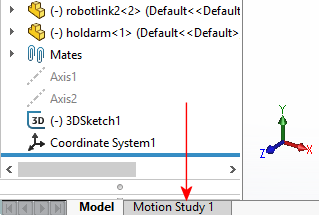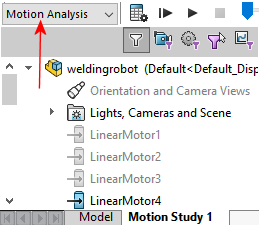First, you
activate your licenses and
add in the required apps. Then you open the model and examine some
components.
You must have licenses for SOLIDWORKS Simulation Professional or higher and
SOLIDWORKS Motion to complete this tutorial.
-
To make sure that your licenses are active, click .
In the dialog box, for Product, you must have SOLIDWORKS, SOLIDWORKS Simulation, and
SOLIDWORKS Motion.
-
In the dialog box:
-
Click Select
All to select all products.
-
For Contact
Information, enter your email.
-
Click Next.
The Product
Activation dialog box reports the results and your products are
activated. These licenses let you use a Motion Analysis study to calculate the
motion of an assembly that incorporates event-based motion control.
-
Click Finish.
-
Click .
-
Under Active Add-Ins,
select SOLIDWORKS Motion and SOLIDWORKS Simulation, then click OK.
From Start
Up, you can click SOLIDWORKS Motion and SOLIDWORKS Simulation to add them each time
you start up SOLIDWORKS.
-
Download, extract, and open the required sample file for this
tutorial:
-
Click here to download motionstudies.zip to your Downloads
folder.
For more information on downloading and managing sample files, see
Sample Files.
-
Browse to the Downloads folder and extract motionstudies.zip to a convenient location.
For example, to organize your tutorial sample files,
create a folder in your Documents
folder named tutorial_files. Then
extract into that folder to create a subfolder named motionstudies that contains the
SOLIDWORKS parts for the motion studies tutorial.
-
In the motionstudies\weldingrobot folder, open weldingrobot.SLDASM.
-
Select the Motion Study 1 tab.

Notice there are four linear motors

listed in the MotionManager and one sensor

listed under the
Sensors

folder in the FeatureManager
design tree.
Motion study features
include motors, forces, springs, dampers, contact, and results. You
configure motion study features from the tools on the MotionManager
toolbar.
-
For Type of Study,
select Motion Analysis.

The event-based motion task schedule appears.